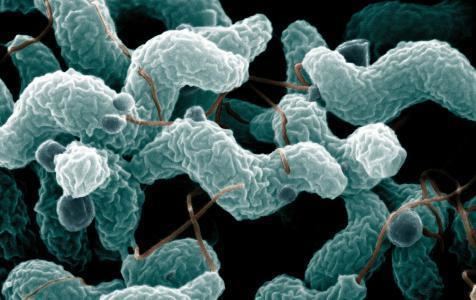Phylum Proteobacteria Family Campylobacteraceae Scientific name Campylobacter coli Rank Species | ||
 | ||
Similar Bacteria, Campylobacter fetus, Campylobacter upsaliensis, Arcobacter, Campylobacter hyointestinalis | ||
Campylobacter coli is a Gram-negative, microaerophilic, nonendospore-forming, S-shaped bacterial species within genus Campylobacter.
Human infection
At least a dozen species of Campylobacter have been implicated in human disease (campylobacteriosis), with C. jejuni and C. coli the most common. In humans, 85% to 95% of infections by the Campylobacter species involve C. jejuni, while C. coli is involved in a majority of the other cases. The bacterium is also found in cattle, swine, and birds. Similar to the C. jejuni, C. coli has the ability to cause enteritis with symptoms such as abdominal pain, diarrhea, bloody stool, and fever. These symptoms are caused, in part, by a secreted cytolethal distending toxin.
References
Campylobacter coli Wikipedia(Text) CC BY-SA
